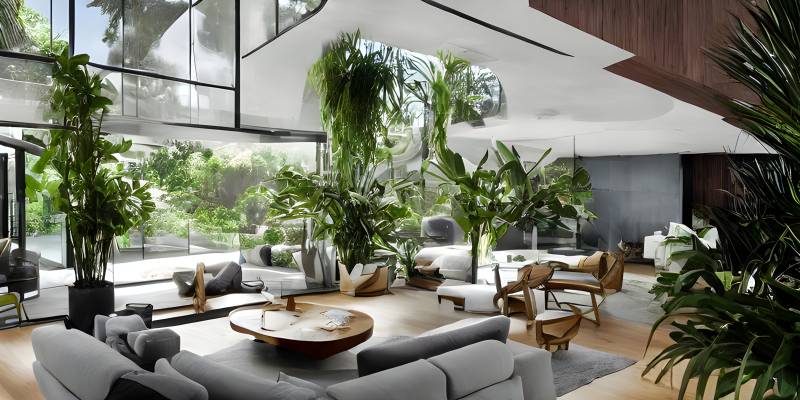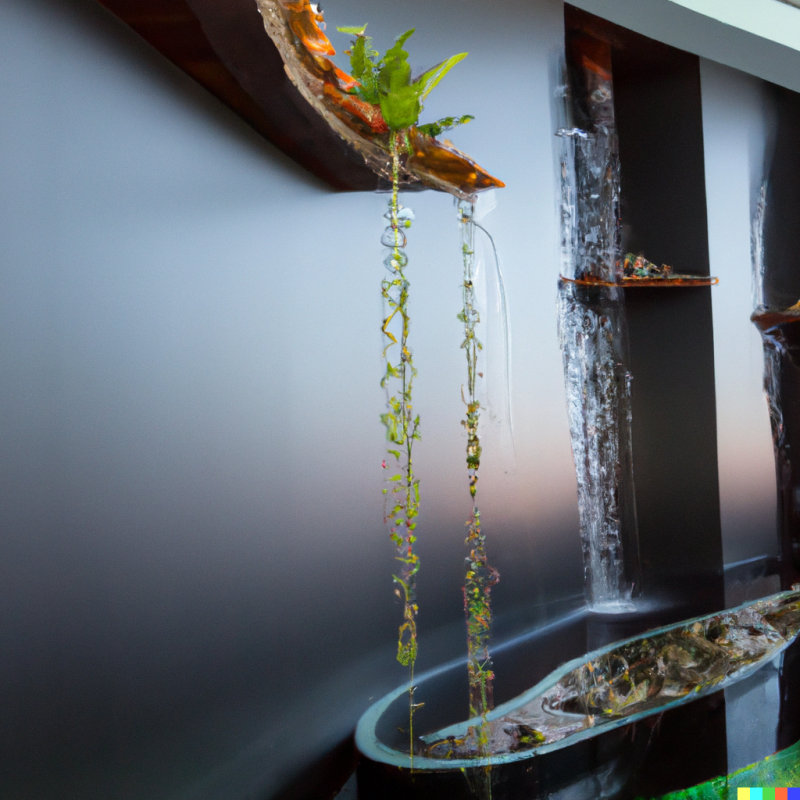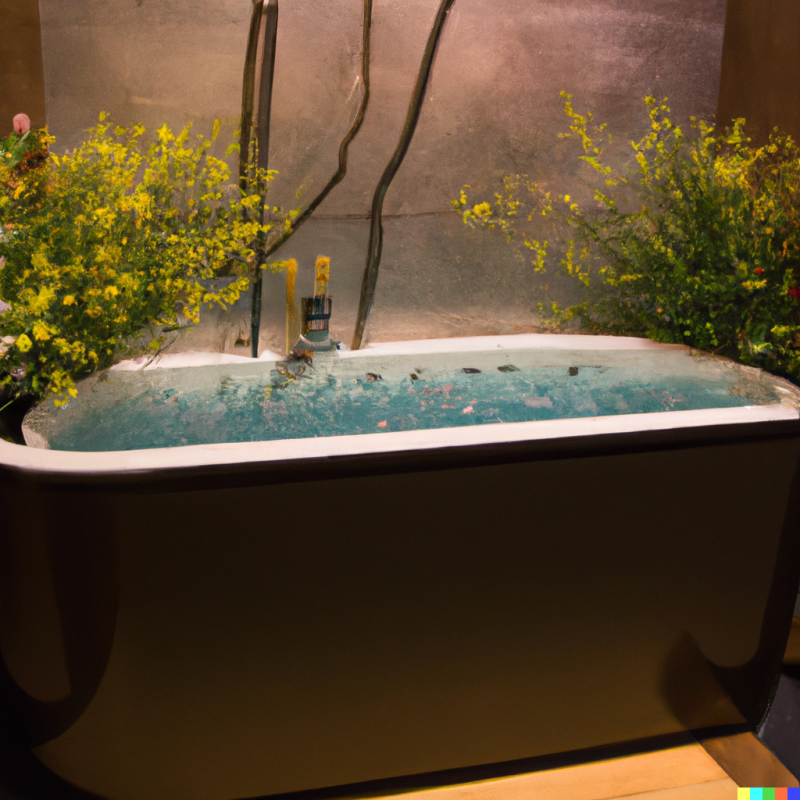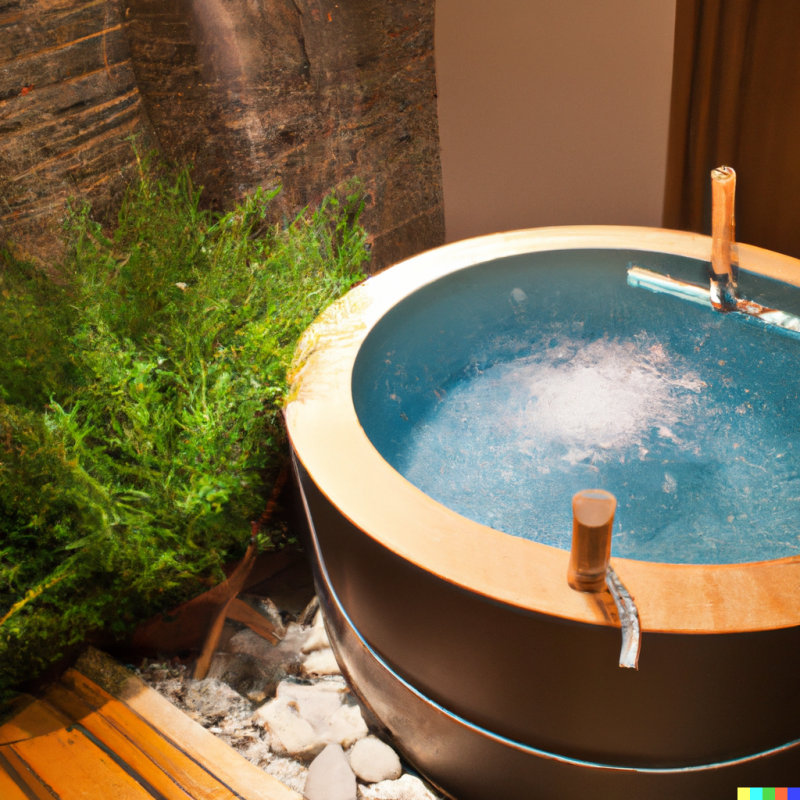Biophilic Design is an approach to architecture and design that seeks to connect people with nature. The word biophilic translates into ‘love of nature.’ When properly integrated into your home, this connection can be beneficial for your physical, mental and emotional health. By incorporating elements of nature into the built environment, biophilic design seeks to create spaces that are both aesthetically pleasing and favorable to our well being. As discussed previously, the elements of biophilic design include natural materials, natural light, plants, water features, views of nature, sounds of nature and more. Water is a powerful biophilic element that can be used to create a sense of connection between the indoors and outdoors. It can create a calming, therapeutic environment in your home, as well as providing an aesthetic touch.

The ability of this miraculous element to take different forms and support life makes it a truly unique substance. Scientists are continuously discovering new properties; however, its mysteries remain unsolved. Recently, scientists found that water has a “memory” and can be charged with positive or negative energy from its environment. Have you asked yourself what holy water really is? It is positively charged water. The act of blessing water is simply transferring positive human energy into a body of water.

Introducing water as a biophilic element in our homes is undoubtedly the ultimate influencer of our well being. Its multi-purpose use provides a wide range of benefits to our well being. Unfortunately, many people are not aware of how to take full advantage of this powerful gift from nature. Property owners and designers may be hesitant to introduce water elements into their projects due to common obstacles such as cost, sanitation, water scarcity, or even cultural conflict. However, there are several ways to overcome these challenges and attain the desired outcome.
Cost is the most common obstacle when it comes to adding water features, regardless of the project type -commercial or residential. Large water features can be value engineered and scaled down as a solution. Nevertheless, many water features are designed incorrectly; a typical example is the placement of a water wall or fountain in a hotel lobby with no sitting areas, thus wasting its calming effect. Since we are spending more time at home than in public accommodations, proper placement of the water features in our home can open up a world of mental restoration, wellbeing and greater performance.
Two Levels of Water Integration
Integrating water into the design of residential spaces offers numerous benefits. The first level of integration is decorative. Water can be used as a furnishing element, such as a water wall to separate spaces instead of a decorative panel, or to reduce noise and promote concentration and relaxation. Also, harvesting and reusing rainwater provides a sustainable solution for water features. There are many ways to integrate water into an outdoor-indoor design, including rain-chains, ephemeral features, birdbaths, modular waterfalls, fountains, water scrims, reflection pools, imagery, the implied presence of sound or light, and step-wells. They provide sound and movement that helps to reduce stress levels while also creating visual interest. By carefully considering these design elements, we can create biophilic spaces that are both functional and beautiful.
The second level of water integration is practical or interactive, which can be recognized in luxury hotel spas and gyms in a commercial setting. However, the residential sector has been slower to catch on, with mainly the luxury sector employing some of the interactive water uses in their homes. Designed for frequent or daily use, interactive water features such as lap pools, hot tubs, cold plunges, cooling mists, flotation tanks and face plunges are known to have undeniable benefits to our health when practiced as a lifestyle. They provide therapeutic benefits, while also adding an element of luxury to your home design. However, most people are not familiar with the proper use and health benefits of these features, and tend to look at it as unnecessary expense. Can you put a price on your health though?

Cold Plunge
One of the most effective water features for your home is the cold plunge. The practice of cold plunging dates back to the Romans and has been part of Chinese medicinal practices for thousands of years. Nordic and Eastern European people have known about the anti-aging and rejuvenating effects of freezing cold water for a long time; it is recognized as a fountain of youth. Today the antidepressant and healing effects of cold plunging have been backed by science. Physicians use the cold plunge to treat four main conditions: 1) to help athletes recover and improve their performance, 2) to prevent relapses of different illnesses, 3) in the treatment of muscular and inflammatory conditions, and 4) to boost the immune system of cancer patients. Exposing your body to cold helps to reduce inflammation. Any inflammation of your body is expressed with a high temperature in the area, so the most effective treatment is to apply cold, and the sooner, the better.
The Best Way to Use it
The proper use of a cold plunge is key to receiving the full health benefits. The short protocol calls for a daily use, in order to align your internal clock with nature. I am sure you have heard about Circadian Rhythm; a natural process that regulates our sleep-wake cycle and repeats every 24 hours. Today, most people are desynchronized with this essential to our health rhythm. Our “biological clock,” or endocrine system, is affected by environmental cues such as sunlight, darkness, hot and cold temperatures, and the movement and magnetic fields of the moon and sun. As a result of this desynchronization, our endocrine system is often operating in a “low battery” mode. Stimulating our hormonal system in a natural way helps restore our body’s functional harmony, promoting long-term health. Cold plunges are an easy way to stimulate our endocrine and immune systems, and eliminate stress-related lactic acid or prevent trauma due to lactic acid accumulation caused by exercise. Emerging into a cold plunge for just a minute can stimulate the release of glutathione (our body’s main antioxidant), tighten your skin, and eliminate cellulite. To get the maximum benefits, it is important to follow the proper protocol.

Drinking Water
Drinking water can be a complex issue with political and social complexities standing in the way of any attempts to change policy. To ensure the quality of the water you drink, take control by installing home water systems with built-in filters, such as touchless faucets or a shower filtration system. Companies like Delos can go beyond Brita filters by customizing water filtration to local water pollution by collecting a home water sample with third-party lab analysis, along with assessing up to a decade of water quality from the local utility company. While buying bottled water doesn’t guarantee purity, investing in a filtering system for your home is the best option. Consider Brita, Pur, or Delos filters, which vary in price and offer protection against toxins. Drinking clean water is essential to maintaining good health, and with so many options out there, you’re sure to find one that fits your needs.
Reverse osmosis water is effective for removing impurities, but it strips out minerals. To replace them, purchase mineralizing filters or add Himalayan sea salt to your water pitcher.
Kangen Water Systems use electricity to separate hydrogen and oxygen molecules, creating an extra hydrogen molecule to raise alkalinity. Certain units can adjust the pH level.
Atla Water creates structured water without electricity. It uses vortex motion to structure the water by separating the hydrogen and oxygen molecule, further energizing it with light.
Keep an eye out for my upcoming publication, in which I’ll discuss the next vital element of biophilic design and lifestyle — The Light Element. Read my previous blog post on the Air Element of Biophilic Design. Please contact me to find Biophilic Design Properties on Kauai or if you would like a copy of Hawai’i Life’s Luxury Market Report.

Leave your opinion here. Please be nice. Your Email address will be kept private, this form is secure and we never spam you.